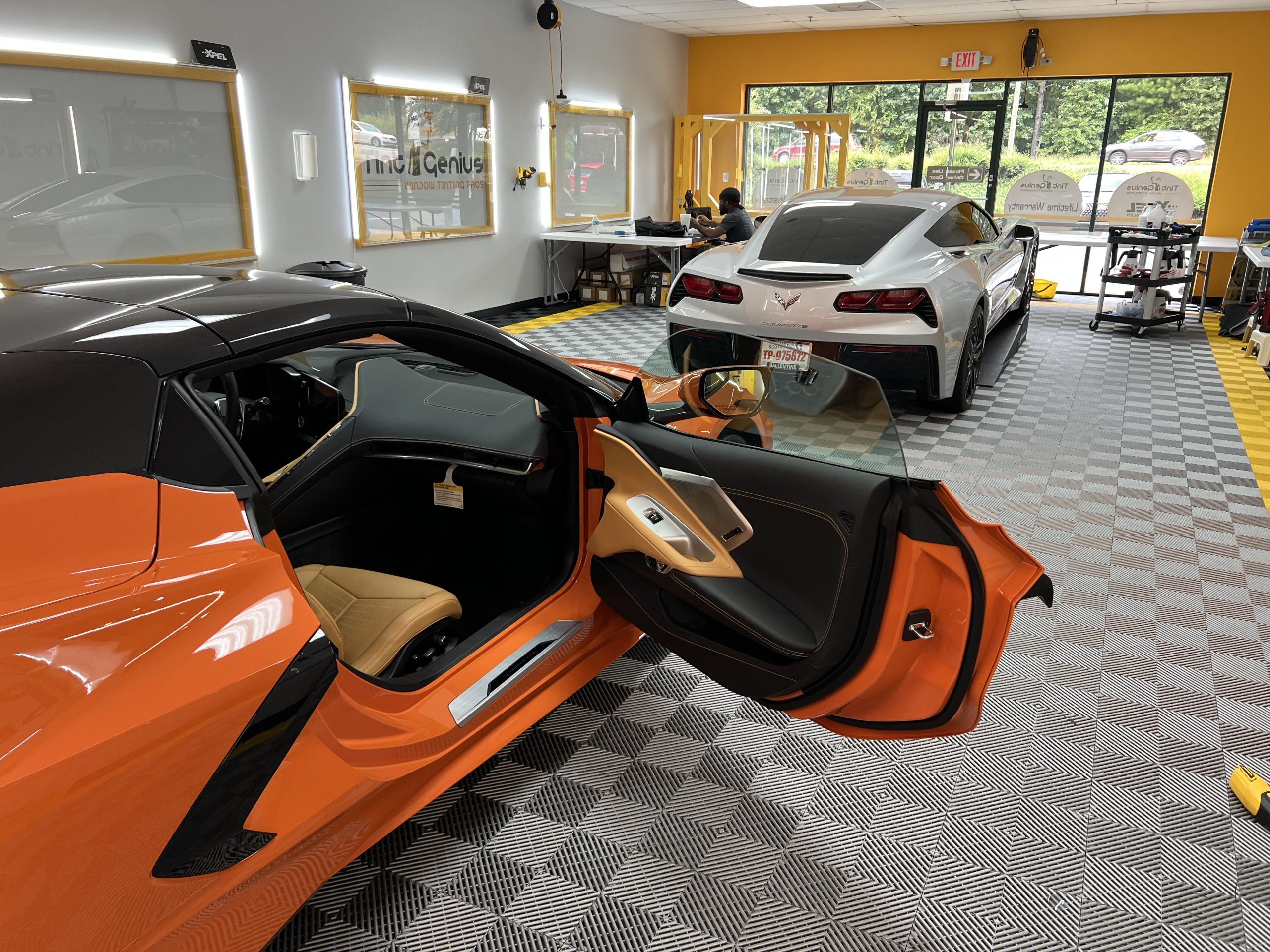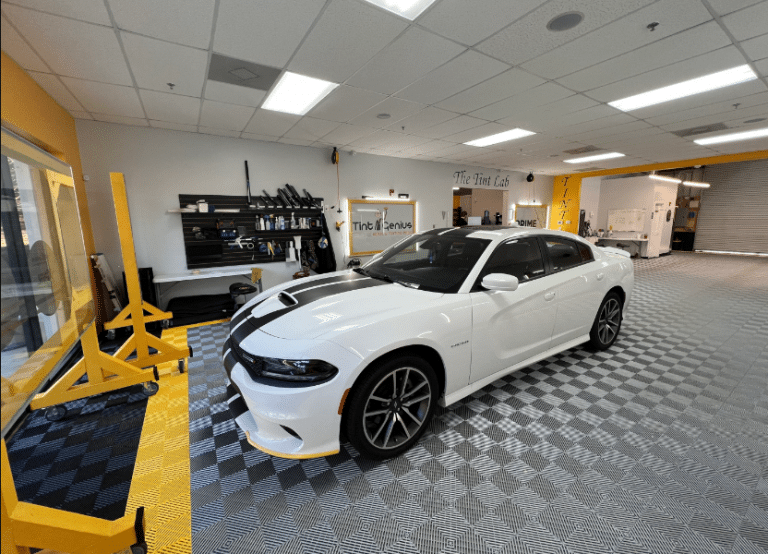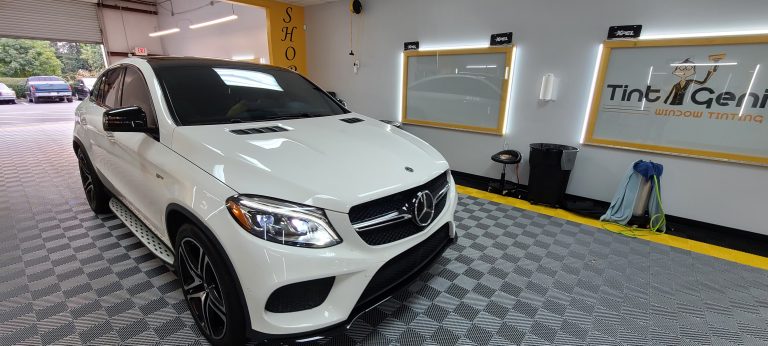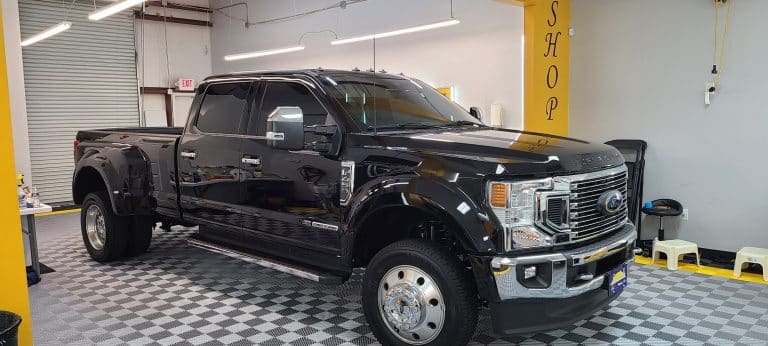Discover Auto Window Film Options for Every Vehicle Type and Style

Discover Auto Window Film Options for Every Vehicle Type and Style
When it comes to enhancing your vehicle, one often overlooked upgrade is window film. You might be surprised how a simple change can significantly improve both the look and comfort of your ride. From cutting down on the feel of that blazing sun during summer drives to adding a sleek, stylish touch to your car’s appearance, window tints offer a blend of practical benefits and aesthetic appeal. In this article, we dive into various auto window film options that cater to every type of vehicle—be it a compact car, a family SUV, or even a sporty coupe—so you can find the perfect match that suits your needs. Let’s explore the different types of films available, helping you understand which option will not only style your car but enhance your driving experience too!
Our article details a wide range of automotive window film options tailored to various vehicle types, including cars, crossovers, SUVs, and minivans. We cover different tint styles, such as dyed, metalized, ceramic, and hybrid films, highlighting their benefits like UV protection, glare reduction, and style enhancement, allowing you to make an informed choice based on your specific needs.
Types of Auto Window Film
Dyed window film is a popular choice for many vehicle owners because it consists of layers of dye that effectively absorb solar heat and reduce the amount of light entering the car. Not only does it give vehicles a sleek and uniform look, but it’s also considered one of the most budget-friendly options available.
One of the main advantages of this film is its ability to offer moderate privacy while driving. It can help reduce glare from sunlight, improving visibility on bright days. A notable downside is its potential for fading over time, which might require you to replace the tint more frequently than higher-end options, diminishing its initially perceived cost-effectiveness.
Metalized Window Film
On to metalized window film—this type incorporates microscopic metallic particles suspended in its layers. These particles work by reflecting sunlight away from the vehicle, improving heat rejection and adding an extra layer of shatter resistance to your windows. Many people prefer metalized films because they enhance the strength of vehicle glass while effectively blocking harmful UV rays.
Yet, there is a trade-off to consider. The presence of metal particles can sometimes interfere with signals for radios, GPS, or mobile phones, deterring some users from this option. However, those who prioritize temperature control and safety often find these drawbacks acceptable due to enhanced performance and durability.
Carbon Window Film
When it comes to carbon window film, you’ll find that this variant utilizes carbon fiber particles that excel at blocking infrared light. This film’s matte finish lends a high-end aesthetic touch to any vehicle without the reflective glossy sheen seen in other types.
The benefits of carbon window film include:
- Matte Finish: Adds an upscale appearance appreciated by car enthusiasts.
- Non-Fading Technology: Unlike dyed films, carbon tints maintain their rich color and effectiveness over time.
- Effective Heat Reduction: This film keeps your interiors cooler during hot summer days, enhancing passenger comfort significantly.
Ceramic Window Film
Finally, ceramic window film stands out as a high-performance option made up of ceramic particles that provide excellent protection against both UV and infrared rays while allowing optimal visibility during day and night.
This makes ceramic film an ideal choice for drivers seeking superior performance without compromising essential communication functions like GPS or mobile signals. While it tends to come with a higher price tag compared to other tint options, many customers regard it as a worthwhile investment due to its unparalleled heat rejection capabilities and long-term durability.
Having explored various auto window films, it’s evident that each type addresses specific needs; next, we’ll uncover the valuable advantages that come with implementing automotive window tinting for enhanced comfort and security in your vehicle.
Benefits of Window Tinting
UV Protection
One of the main benefits of tinted windows is exceptional UV protection. Studies reveal that window tint can block up to 99% of harmful UV rays, safeguarding you and your car’s interior. While natural sunlight streaming through your windows might feel pleasant, over time, those same rays can damage materials like leather seats and dashboard plastics. Continuous exposure leads to fading, cracking, and deterioration. By investing in window tint, you’re creating a barrier that prevents these harmful rays from affecting both your vehicle’s aesthetics and your skin.
Heat Rejection
Not only does window tint protect against UV rays, but it also excels at heat rejection. Imagine stepping into a car on a stifling summer day; the interior often feels like a sauna. Window tints, especially ceramic ones, can reduce heat inside the vehicle by up to 45%. This improvement enhances your overall comfort while driving and makes your car more inviting after being parked in the sun. Additionally, this significant drop in temperature means your air conditioning system doesn’t have to work as hard, which improves fuel efficiency and reduces strain—benefits that extend the life of your vehicle.
Privacy and Security
The advantages don’t stop there; tinted windows also offer elements of privacy and security. Picture this: you park your car and walk away. From a distance, anyone glancing at it finds themselves unable to see inside clearly. This concealment provides an added layer of privacy for both passengers and belongings inside. Tinted windows deter potential thieves who generally seek easy targets with visible valuables. In simple terms, cars with tinted windows are less attractive options compared to their non-tinted counterparts.
Yet, it’s essential to remember that enjoyment comes with responsibilities when contemplating window tinting. Being aware of local regulations regarding tint percentages is wise before making any decisions. Let’s now explore how these regulations shape our experience with automotive enhancements.
Legal Aspects of Tinted Windows
Window tint laws can be complex, often varying widely from one state to another. As a vehicle owner considering tinting, you must navigate these regulations carefully to avoid potential fines or complications. In South Carolina, for example, every vehicle type has specific requirements regarding visible light transmission (VLT).
For cars like sedans, the law states that front side windows must allow more than 27% light in, while SUVs and vans have the flexibility to use any darkness on their back windows. This creates an interesting dynamic when choosing your tint; it’s essential to not only consider personal preference but also adhere to what’s legally permissible.
Ignoring local regulations can lead not just to fines—which can start at $200—but also to more severe repercussions like losing your tint or even facing minimal jail time for repeated violations.
State Regulations
Regulations differ not only by state but often by vehicle class as well, which might surprise some drivers. For instance, as noted earlier about South Carolina, the rules are pretty lenient for SUVs and vans. They can opt for a darker shade on back windows without any limitation, while sedans must adhere to stricter guidelines. Just think of it: you could be driving an SUV with tinted rear windows that seem intimidatingly dark while a similar sedan next to you complies with laws diligently by sporting lighter shades.
Here are a few other states and their tint laws:
- California: Front side windows must allow over 70% light, whereas back windows may be darker.
- Texas: Restrictions on front windows exist, but larger SUVs and trucks can have darker tints on rear sides.
- New York: Front side windows must allow over 70% light through as well.
Each of these examples highlights how crucial it is to familiarize yourself with local laws before making any modifications.
Medical Exemptions
Interestingly enough, there are avenues available for individuals who may need darker tints due to medical reasons. Certain conditions, such as lupus or severe sun sensitivity, warrant lighter skin exposure; hence, many states have provisions for medically exempted window tints. For example, in Texas, drivers suffering from such conditions can apply formally for permission to exceed regular tint limits—offering them relief against harmful UV rays.
However, bear in mind that getting this exemption typically requires proper documentation from a healthcare provider, underscoring the importance of being organized in your efforts if you feel your health demands special accommodations.
With a clearer understanding of these essential laws and exemptions in place, moving forward becomes easier. This knowledge sets the stage perfectly for deciding on the most suitable film option tailored specifically for your vehicle’s needs.
Choosing the Right Tint for Your Car
When it comes to choosing the perfect window tint, understanding how each option aligns with your needs is key. Start by considering the type of vehicle you own. A family SUV, for example, might be more suited to metalized or carbon tints because of its larger windows. These options not only enhance privacy but also provide added heat rejection, ensuring your passengers remain comfortable on hot days.
In contrast, a sleek sports car could benefit from dyed tints that offer a stylish appearance without compromising visibility. It’s all about finding the functional balance that works for your specific vehicle type and lifestyle.
What about the desired features you want in window tint? Maybe you’re someone who often finds themselves sweating behind the wheel in summer heat. In that case, ceramic tints would be your best bet. They excel at blocking UV rays and keeping your car cooler while also minimizing glare—ideal for those longer drives.
However, if keeping costs low is a priority, don’t overlook dyed films. While they may not offer all of the protective benefits of higher-end tints, they can still provide basic shade and aesthetics without making a big dent in your wallet.
Understanding the cost versus quality balance is another important factor as you weigh your options for window film.
Yes, higher-quality films often come with a higher upfront cost, but think about their long-term value and durability. For instance, investing in ceramic tints may seem expensive initially—ranging from $400 to upwards of $800—but they often come with lifetime warranties and effectively block over 99% of harmful UV rays—superior longevity compared to cheaper alternatives like dyed films, which typically range from $100 to $300 and may fade over time.
Legal Considerations
Additionally, it’s crucial to keep local laws regarding window tinting in mind before making a final decision. Different states have varying limits on darkness and reflective properties that can significantly affect choice—California allows for up to 70% visible light transmission (VLT) for front windows, while Florida permits up to 28%. Be sure to check what’s permissible in your area so you can stay within legal boundaries while achieving your desired look!
Ultimately, choosing the right tint involves more than just picking a color; it’s about harmonizing aesthetic appeal with practical functionality while affirming compliance with local regulations.
This knowledge sets the stage for evaluating how price interacts with quality when selecting your auto window film options.
Quality vs. Cost of Films
Higher-quality films is not just marketing jargon; they generally provide enhanced performance features and greater longevity compared to their budget counterparts. When you’re at the point of making a decision, it’s essential to weigh the value these films offer against their initial price tag. For instance, while dyed tints might be your economical choice, they don’t provide the same level of UV protection or heat rejection as ceramic tints.
This means that over time, you may end up spending more on replacements or compensatory features like sunscreen or cooling systems, which undermines the savings you initially thought you were gaining.
While the initial investment might be higher for superior films like ceramic, the long-term benefits often justify the cost. In addition to performance, higher-end films usually come with better warranties, providing peace of mind as well as guaranteed durability.
Installation Process Explained
Professional installation is key to ensuring the effectiveness and longevity of your window tint. This is not only about aesthetics; it’s also about the full functionality and durability of the film you choose. Here’s a detailed walkthrough of what to expect from a professional tint installation.
Step I – Consultation
The journey begins with a consultation where the installer assesses your vehicle. This crucial step involves discussing your preferences, whether you’re seeking UV protection, glare reduction, or aesthetic appeal. The installer will guide you through the various tint options, providing insights based on your needs and local regulations regarding tint darkness. It’s a collaborative moment for smoother flow, ensuring personalized service tailored to your vehicle and lifestyle.
Step II – Preparation
Once you’ve chosen your tint, preparation becomes vital. The windows are meticulously cleaned to eliminate dirt, dust, and grime that might interfere with adherence and cause imperfections. Imagine trying to paint a canvas without first cleaning it; you’d end up with an uneven surface. Each window is scrubbed with specialized glass cleaners and microfiber cloths to achieve that showroom shine.
Step III – Application
With clean windows ready for action, the installer begins the application process. They start with the largest windows, carefully laying out the film and smoothing it to avoid air bubbles. This requires precision—many professionals use specialized tools such as squeegees and heat guns to ensure each layer bonds smoothly to the glass. A well-trained technician knows how much pressure to apply and how to maneuver around tricky corners without damaging the film or the glass itself.
Step IV – Curing Process
After application, patience is essential during the curing process. Your vehicle typically needs some time in a controlled environment where temperature and humidity are optimal for drying and bonding. This stage allows the adhesive in the film to set properly against the glass, ensuring a strong hold that can withstand daily wear and tear without peeling or bubbling.
To achieve these results and ensure legal compliance with local laws regarding tint percentages, it’s wise to let certified professionals handle installation—like those at Tint Genius. We adhere strictly to quality standards while bringing invaluable expertise that makes all the difference in achieving a flawless finish.
With this understanding of the installation process, you’ll be better prepared to engage with professionals about your needs when choosing window tints for your vehicle.
Incorporating professional services at Tint Genius can significantly enhance your experience, ensuring both quality and compliance every step of the way. Call us at 678-609-6005 today for expert installation of ceramic window films in McDonough, GA!



